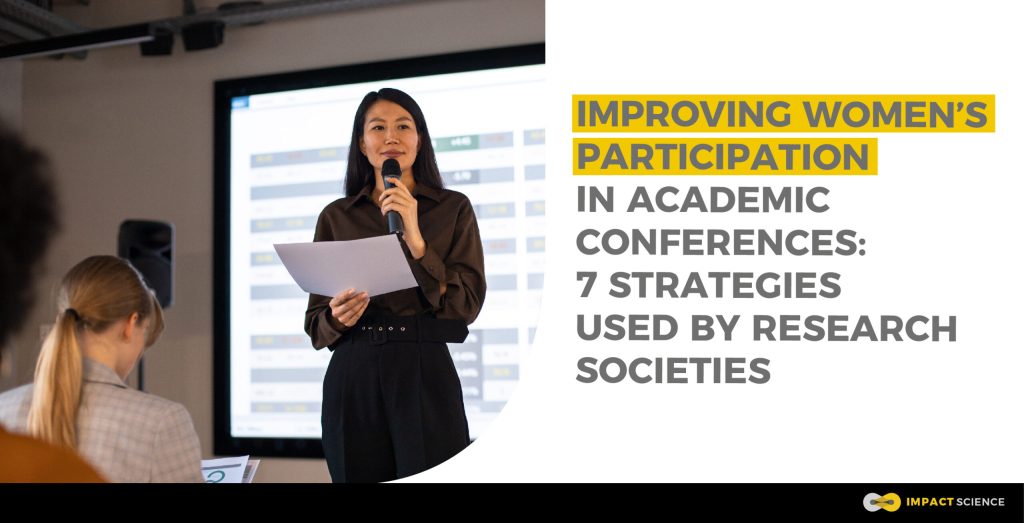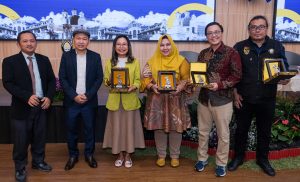Academic conferences are a prime opportunity for research societies to increase member engagement and strengthen their branding, as well as an important source of revenue. For researchers, they are an avenue to foster networking and collaboration and are crucial in furthering their career growth. However, women have historically been underrepresented at conferences. A 2020 study by the Radiological Society of North America revealed fewer women moderators in panels than men and that women attendees participated much less than men did in the follow-up question-answer sessions. Considering the links between gender diversity and better science, research societies are therefore taking active steps to improve women’s participation in conferences. This article outlines examples of societies and conference organizers and the strategies that they have implemented.
- The International Society of Quality-of-life Studies
Women from low-income countries may hesitate to participate in conferences due to the high cost of travel and accommodation, especially for international conferences, in addition to the high conference participation fees. Research societies can encourage participation by providing various forms of financial support to such scientists; for example, the International Society for Quality-of-life Studies offers a travel grant to ensure increased participation of women from developing countries.
- Cell Symposia
One of the primary reasons for lack of participation in conferences is the varied responsibilities that many women face with regard to childcare. Conference organizers can take these factors into account and create a more inclusive environment for parent delegates. For example, Elsevier has set up a Family Support Award for early-career researchers attending the 2023 Cell Symposia. This award comprises a childcare grant that can take care of local childcare costs and basic expenses of an accompanying caregiver. Apart from this, conference organizers can also arrange for small nursing rooms within the premises of the conferences. Conference organizers can gain an understanding of their attendees’ and speakers’ needs through ongoing sustained communication.
- The American Society for Virology, and others
A study on four prominent virology conferences, including the American Society for Virology Annual Meeting, revealed a direct correlation between female representation in the organizing committee, and the number of women participants in the conference. This is not surprising, since women are better equipped to empathize with the many challenges that women scientists normally face and may therefore be able to devise and implement different ways to make the conference more welcoming to women. Additionally, the presence of women in the organizing committee provides encouragement and support for women interested in participating in the conference.
- Nature Conferences
Since 2019, Springer Nature has put forth an open declaration on avoiding all-men panels (i.e., manels) in any events hosted and co-hosted by Springer Nature, including the Nature conferences. Academic societies worldwide today agree unanimously on the need for a balanced representation of women in discussion panels. Other academic societies and publishers too will likely need to implement similar measures to improve representation of women in their conferences.
- UK Society for Endocrinology
In order to address the lower participation of women attendees in discussion or Q&A sessions, the UK Society for Endocrinology has laid some ground rules for their annual conference. These rules include having more sessions chaired by women and having the first question of the session asked by a female audience member. This intervention was shown to not only enhance the intrinsic self-confidence of women but also increase the number of women participating in the remaining part of the discussion.
- Society for Social Studies of Science
Fostering connections between younger and more experienced women is one effective way to boost women participation in conferences. This helps the first-time attendees to become more comfortable in socializing and networking and can help maximize their returns on the conference. The Society for Social Studies of Science has developed a similar mentorship program to pair up tenured professors with non-tenured professors, non-tenured professors with post-docs, and post-docs with graduate students.
- Schizophrenia International Research Society
The Schizophrenia International Research Society has set up a comprehensive code of conduct for its annual meeting, with special emphasis on zero tolerance for sexual harassment. Often quite underrated, this is probably the most important factor that can promote higher participation of women in academic conferences. Young women, especially graduate students and first-time attendees, continue to face harassment, bullying and discrimination. Organizers can work towards providing a safe space through their events so that women can utilize the benefits of the conference in a warm and welcoming atmosphere.
Boosting the participation of women in conferences is one of the most important ways in which academic societies can improve gender diversity in science, which ultimately leads to more accurate research, unique and innovative research ideas, and a more robust talent pipeline in STEM.









